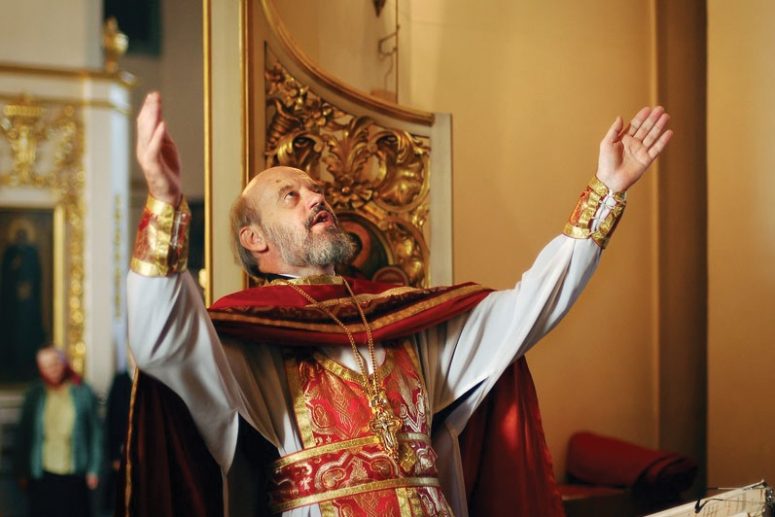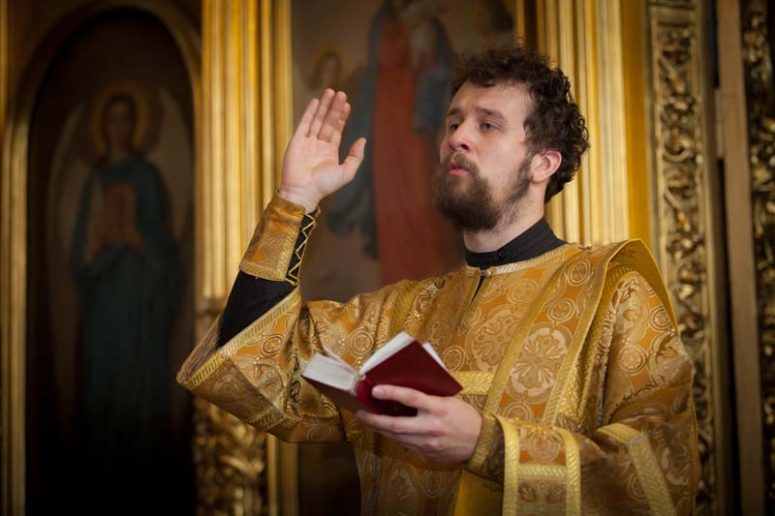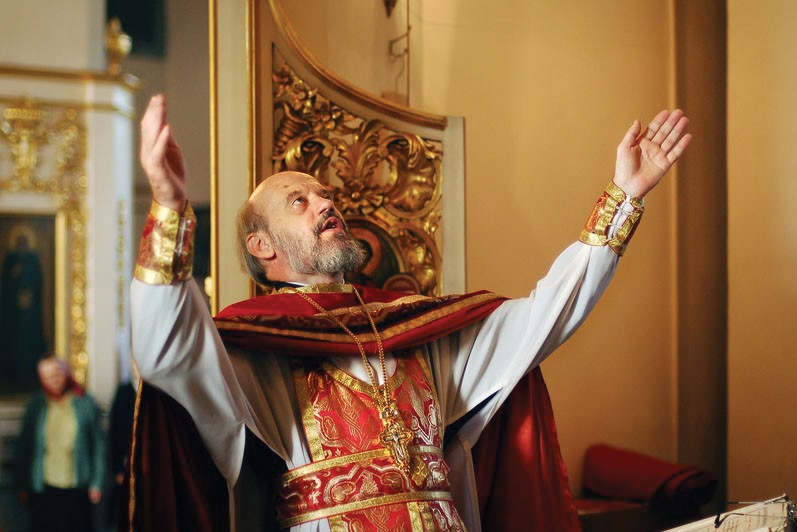
Orthodox worship is rich in liturgical gestures, i.e., specific hand and body movements. This rich repertoire is caused by the fact that being human does not boil down to a mere soul wrapped in a body: our being consists of inseparable unity between the soul and the body as one single whole. That is precisely the reason why the prayer of the human spirit expresses itself through that person’s body and affects it in such a way that that body also participates in worship. It is conveyed by a variety of worship gestures and movements, e. g., the sign of the cross, bows and prostrations, kneeling or bowing one’s head, kisses, raising up one’s hands, etc. Some movements and gestures have fallen out of use. Some have persisted but are mostly used only by priests, e.g., lifting up one’s hands during prayer.
Raising up hands is a very old custom. This gesture was widely used in the Old Testament era, which is proven by the Book of Psalms with its numerous mentions of raising up one’s hands during prayer, Thus will I bless thee while I live: I will lift up my hands in thy name (Ps. 63: 4); Lord, I have called daily upon thee, I have stretched out my hands unto thee (Ps. 88: 9).

Early Christians prayed with stretched-out hands, too. It was considered normal. Almost all ancient frescoes portray Christians with lifted up hands. Apostle Paul in his letter to Timothy expresses his wish that men pray every where, lifting up holy hands, without wrath and doubting (1 Tim. 2: 8). Early Christian authors also mention the lifting of hands. Clement of Alexandria (3rd century) wrote: “So also we raise the head and lift the hands to heaven, and set the feet in motion at the closing utterance of the prayer, following the eagerness of the spirit” (Stromata, VII, Chapter 7). Origen speaks in unison with his teacher: “Of all the innumerable dispositions of the body that, accompanied by outstretching of the hands and upraising of the eyes, standing is preferred—inasmuch as one thereby wears in the body also the image of the devotional characteristics that become the soul.” (On Prayer). “Prayer with one’s hands stretched out in the shape of a cross is especially beneficial. It is in this way that we receive a blessing from God and bless others in turn,” Saint Nilus of Sinai said, referring to the monastic tradition of his time (Epistula 1, 87 (PG 79, 121A)).
Thanks to some stories about the lives of first monks, we know that some holy fathers did not just pray with lifted up hands: they did not stop doing so till the end of their prayer. Abba Sisoes’ spirit would fly to the heaven so quickly that “if other brethren prayed with him, he would hurry to put his hands down so that his spirit wouldn’t be seized and remain in the celestial spheres for too long.” (Abba Sisoes, 1).

The question when lay people stopped praying with lifted hands during the Liturgy remains unanswered yet. Possibly, the disappearance of this custom was a result of gradual cooling off of prayerful zeal. Only priests have retained the original custom. The fact that the same custom is seen in other liturgical traditions proves that lay people in Byzantium were also acquainted with it, which is further attested by the Typicon. For instance, the Typicon prescribes to all lay members of congregation to repeat the Prayer of St. Ephraim the Syrian “with lifted hands” (Typicon, vol. 2.) This is the current way of reciting this prayer in some Orthodox Churches.
Generally speaking, private prayer with lifted hands is acceptable if the person who prays doesn’t use it as a pretext for pride. However, if you use this kind of gestures in public, e. g., during the Liturgy, it will likely make other people indignant and distract them from prayer. If one day the hierarchs of the Church decide to motivate the laity to take part in worship more actively by bringing back this liturgical gesture, I believe it will be helpful. It will remind all the faithful that the Liturgy and all church worship in general is not just a thing the clergy do. It is our common cause. It is everyone’s ministry and duty to praise God and stretch out our hands to him. (See Job 11: 13).




